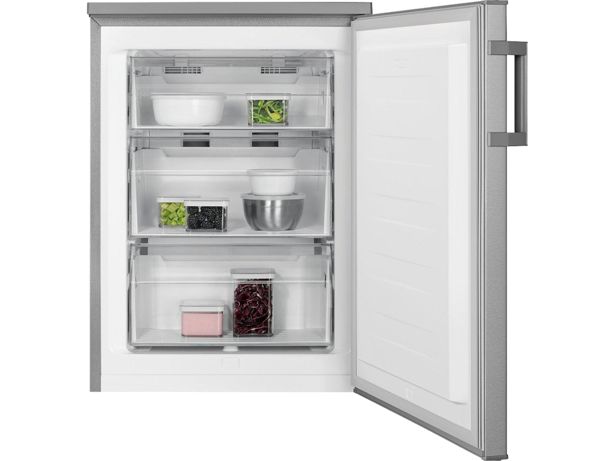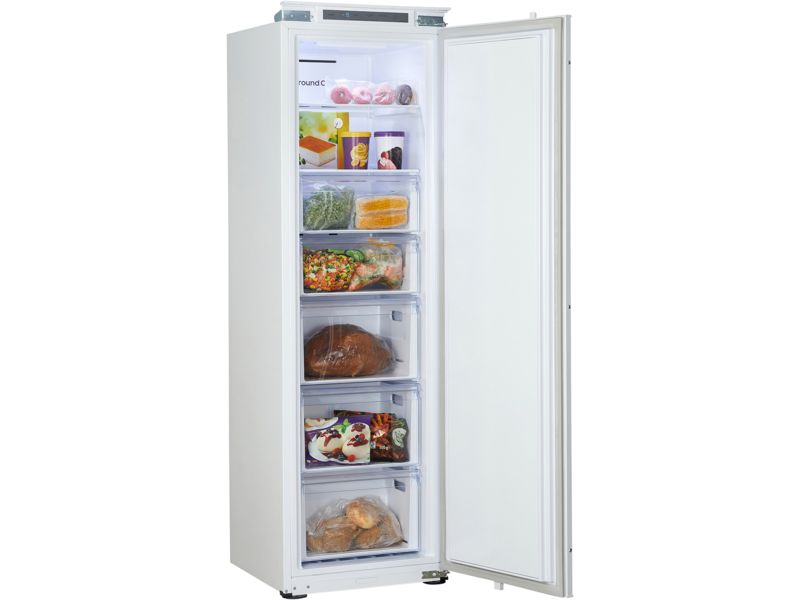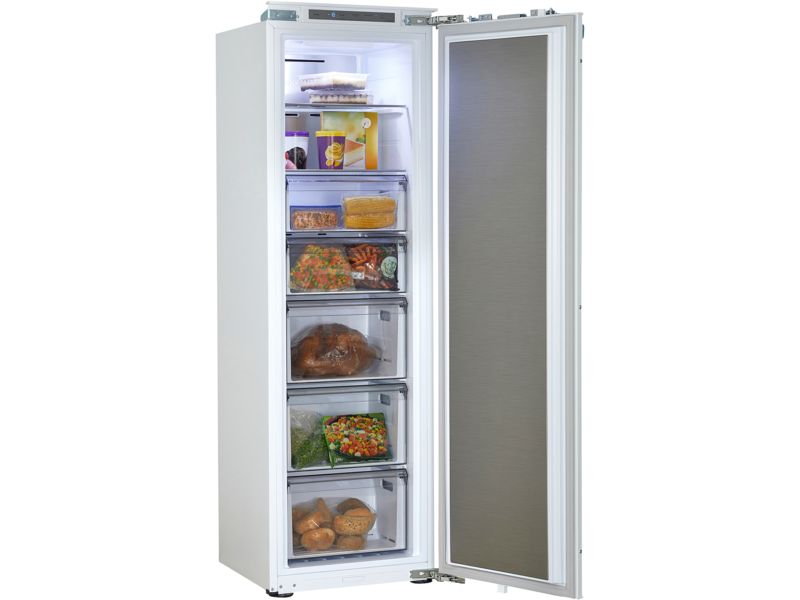What temperature should a freezer be?

Frozen food can help you cut back on unnecessary waste, saving you time and money. But it's important to store food correctly in the freezer to get the most out of it.
From preparing your food for hassle-free freezing to defrosting it properly ahead of cooking, we run through some key tips to keeping your food safely stored in the freezer.
See our pick of the best freezers.
What's the best temperature for your freezer?
If you want to get the most out of your food, the ideal temperature in your freezer is between -18°C and -20°C.
At that temperature range your food will be safely stored, as the cold prevents most bacteria from growing or producing toxins and the chemical reactions that lead to spoilage are slowed down.
In effect everything is placed into a dormant state.
Preparing food for freezing

If you want the food you're freezing to be at its best when you defrost it, following these simple guidelines will help:
- Freeze early for freshness The closer to its peak quality you freeze an item, the better it will be when defrosted. Try and identify food you won't use right away and get it in the freezer as soon as possible.
- Don't ignore use-by dates Make sure you freeze food before the use-by date. Remember, freezing won't kill off bacteria and toxins, so any that have developed on your food after the use-by date will still be there once it's thawed. Don't risk it.
- Wrap up well for the cold Freezer burn is caused by air coming into contact with the surface of the food inside the freezer. To help prevent it and maintain quality, place food in air tight containers, freezer bags or cover it properly with freezer wrap.
- Handle leftovers properly These should be left to cool on the counter for a maximum of 1-2 hours before freezing. Otherwise, the warmth of recently cooked food will send the temperature in the freezer skyrocketing. Not only will that compromise the quality of other food inside by potentially thawing it slightly, but it will also force your freezer to work harder to cool down, pushing up your energy bills. Consider splitting leftovers into individual portions, so you can defrost just what you need later on.
- Choose freezer-friendly foods Not all food is suitable for freezing. Scroll down to find a list of foods you can and can't freeze.
- Label it Identifying which food makes up that frozen block in a frosted freezer bag can be a tricky task, especially months after you put it inside. Labelling bags before freezing will help cut out the guess work.
Why fast freezing is important
The faster food freezes the more likely it is to maintain its quality when defrosted.
Food that freezes too slowly will develop ice crystals, and during thawing these can cause damage to foods. For example, you might find slowly-frozen meat dripping and losing moistness as you defrost it.
Our freezer reviews will help you find a super-fast freezer that scores a maximum 5* for freezing power.
How to fit more food in your freezer

- Remove the packaging Strip away whatever boxes you can before storing to help free up more space.
- Freeze your food flat Lay filled freezer bags on the counter to let excess air out, then make sure they're sealed properly before freezing them flat.
- Use the correct size of container Save space by choosing as close to the correctly sized container for whatever leftovers you’re storing.
- Defrost regularly A build-up of ice will take up space where food could be. Use our guide on how to defrost your freezer.
For more tips check out our full story on how to fit more in the freezer.
Foods you can and can't freeze

Knowing the foods you can and can't freeze will help you save on space and prevent waste. Below are just a few of them.
Foods you can’t freeze
- Fried food – the oil will seep through, leaving the food soggy and changing its flavour.
- Salad greens – lettuce will just turn to gloop if frozen.
- Herbs – such as basil and chives can be frozen but will only be suitable to add to cooking dishes rather than garnishing.
- Mayonnaise – and other egg-based sauces will just separate and curdle when frozen.
- Vegetables with high water content – such as cucumber, bean sprouts and radishes, will go soggy.
Foods you can freeze
- Eggs - but not in their shells. Always crack them into freezer-safe containers or bags. If kept in their shells, the eggs will expand and crack making them inedible.
- Cooked pasta – but make sure you cook it al dente beforehand otherwise it will go mushy. Try tossing it in a little olive oil, too. That way it shouldn’t stick together as much
- Bread – except the crusty varieties can be frozen for around three months. Slice before freezing so you can pop it straight in the toaster.
- Raw pastry – can be frozen for around six month and should only take one hour to defrost.
- Yoghurt and cream – although best used only for cooking after freezing as both can separate and become lumpy once defrosted.
- Stock – try putting it into an ice cube tray to make it easy to use straight from the freezer.
Once your freezer is neatly packed with freezer-friendly foods in labelled bags, the next thing is to consider how to defrost it ready for cooking.
It's worth keeping in mind that although freezing puts a pause on the growth of bacteria, it doesn't kill it off. As frozen food thaws and emerges from its dormant state, bacteria can once again begin to develop.
This is why defrosting frozen food correctly is an essential aspect of maintaining food safety.
Read our full story on the surprising foods you can and can't freeze.
How to defrost food safely

When you take your food out of the freezer, it's important to defrost it safely before cooking or eating it.
The safest way to defrost food is in the fridge. It's best to plan ahead for this and allow enough time for food to fully defrost. Small items can defrost overnight, but others can take a day or two. Large items like turkeys can take up to four days to fully defrost in a fridge.
Alternatively you can thaw food in a microwave using the defrost setting. If you opt for this method, make sure you are ready to cook it immediately after as the microwave could raise the temperature of the food to a level where bacteria can start to flourish.
Avoid defrosting food at room temperature, as most bacteria on your food will grow at temperatures of above 8°C, putting you at increased risk of food poisoning.
Make sure your food is fully defrosted before cooking. Partially defrosted food may not cook evenly, meaning that harmful bacteria could survive the cooking process. It could look cooked on the outside, but remain frozen inside.
Defrosted food should be reheated only once, because the more times you cool and reheat food, the higher the risk of food poisoning. You should also aim to eat it within 24 hours.
See What temperature should a fridge be? for advice on storing food in the fridge.


